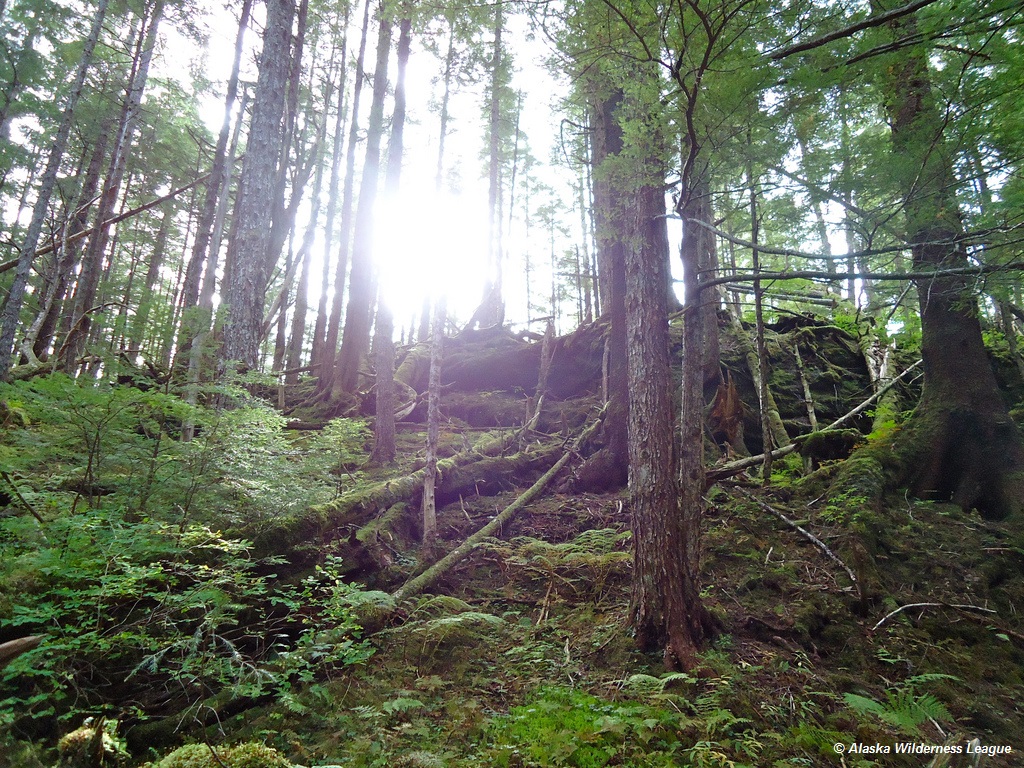This week we're celebrating the Tongass National Forest officially turning 106. The forest was created back on September 10, 1907, by President Theodore Roosevelt, and is one of five remaining intact temperate rain forests on the planet.

The good news: the Tongass forest, located in southeast Alaska in an area popularly known as the "Inside Passage," is one of our nation's greatest natural treasures and home to all five species of pacific salmon, bears, bald eagles, humpback and orca whales, and the Alexander Archipelago wolf.
The bad news: it hasn't been a very happy birthday for the Tongass, as the Big Thorne timber sale -- a plan announced by the U.S. Forest Service to log more than 4,600 football fields' worth of ancient Tongass old-growth trees -- continues to move forward, and the Forest Service has announced that several additional timber sales will be coming in the future as well.
So when we blew out the candles on our Tongass birthday cake this year, we made a very specific wish -- that the Forest Service finally make good on its promise to stop devastating large-scale industrial logging, transition away from old-growth logging, and protect America's rainforest for the future.
More than three years ago, the Forest Service actually proposed moving away from old-growth logging -- in May of 2010, Agriculture Secretary Tom Vilsack sent a letter to the now-defunct Tongass Futures Roundtable calling for a transition "quickly away from timber harvesting in roadless areas and old-growth forests" through developing a "transition framework" for the Tongass National Forest in southeast Alaska. Unfortunately, since that time, the messages being sent regarding the fate of the Tongass' old-growth trees have been mixed.
On the one hand, Secretary Vilsack recently issued a Secretary's Memorandum outlining the details of setting the transition in motion, including increasing investment in alternative and sustainable economic development in southeast Alaska. The memorandum also reaffirmed the need to restore and maintain things like clean water, healthy fish and wildlife populations, as well as the scenic beauty and human ties to the land that have come to define the Tongass.
On the other hand, the release of the memo coincided with the announcement of Big Thorne and the prospect of huge swaths of old-growth being clear-cut. It simply doesn't make sense to say that the forest is being transitioned out of industrial-scale old-growth logging when the Forest Service has decided to green-light the largest timber sale in our nation's forest in a decade and has stated that it is just one of several old-growth sales yet to come. These sales are nothing but a handout to the timber industry. We already spend more than $20 million in taxpayer dollars annually subsidizing the clear-cutting of old-growth timber in the Tongass, and these sales will require tens of millions more. And all to support a declining timber industry that supports barely more than 100 local jobs despite the constant influx of taxpayer cash.
Forest Service officials need to quit talking out of both sides of their mouths. The transition away from industrial old-growth logging is critical, and must happen sooner rather than later. Large-scale old-growth sales such as Big Thorne will have devastating consequences for the Tongass and the people and wildlife that depend on it. Southeast Alaska is the most productive fishery in the world, providing $1 billion to southeast Alaska's economy and supporting 7,300 jobs annually. Add that to the Tongass' billion-dollar tourism industry, which attracts more than one million visitors each year and employs an additional 10,000 people. Both industries rely on an intact, healthy forest in order to thrive. Once we cut the Tongass' old-growth trees, they are lost forever.
It's time for the Forest Service to recognize the current economic realities of southeast Alaska and bring management of the Tongass into the 21st century. This has to be done by focusing on sustainable industries like tourism and fishing -- not continuing to prop up the timber industry. The Tongass National Forest is our forest -- America's rainforest -- and the crown jewel of our national forest system. For its birthday, let's give it the gift of a transition to a bright and sustainable future.
